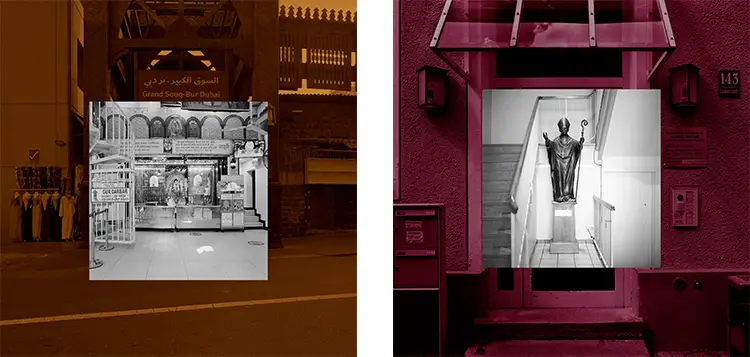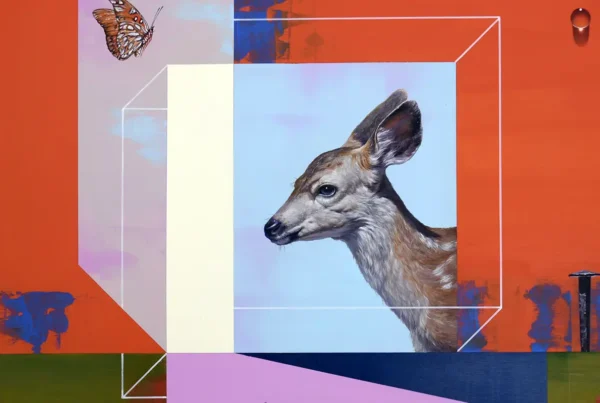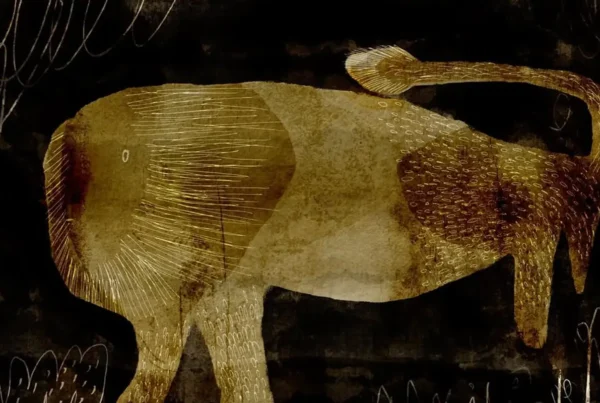“A ribbon and a prayer demonstrates that the transformation of places into sacred sites is a phenomenon shared across all societies.”
A Childhood in Shadows and Silver
From his earliest years, Massimiliano Camellini was immersed in the visual language of photography. Raised under the influence of his father, a respected Italian photographer active during the 1960s, Camellini developed not only a technical foundation in image-making but also a sensibility toward the photographic object as a carefully constructed artifact. The darkroom became a place of learning, where paper types, framing techniques, and chemical processes were taught with the same importance as composition and exposure. This deeply formative environment gave him more than just skills; it instilled in him a mindset that treats photography as both a method of inquiry and a poetic medium. His academic background in human sciences further refined his approach, offering him the analytical tools necessary to translate complex cultural and philosophical inquiries into visual form.
Camellini’s loyalty to analog photography is not merely a matter of tradition but a deliberate choice that aligns with his conceptual goals. He finds in analog processes a certain visual and emotional weight that supports the thematic depth of his projects. The tactile quality of film and the specific tonalities it captures allow him to draw out nuanced details within each frame. Through this method, objects and settings acquire a contemplative stillness, often functioning as silent witnesses to broader socio-cultural transformations. His practice resists the immediacy of digital capture, instead favoring a slower, more intentional pace that mirrors his investigative and narrative-driven approach to photography. Every decision, from material selection to final display, is informed by a desire to bridge the visible with the invisible, the physical with the symbolic.
Today, Camellini’s photographic voice is distinguished by its engagement with the intersections of geography, myth, and the anthropology of space. His works do not merely document reality but reinterpret it, transforming ordinary environments into sites of metaphor and memory. Across his evolving body of work, he consistently asks how place and identity, function and symbol, coexist and conflict within physical spaces. This philosophical foundation, combined with a disciplined commitment to craft, shapes a photographic style that is as conceptually rich as it is visually striking.
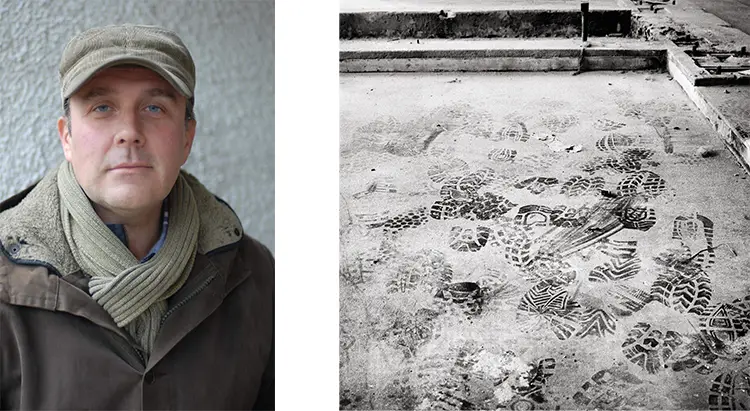
Massimiliano Camellini: Territories of Dream and Inquiry
Camellini’s transformation from photographer to artist occurred not through a singular event but as a gradual convergence of interests in history, anthropology, and speculative fiction. These disciplines began to inform his visual vocabulary, offering him a framework to explore the latent narratives embedded in space and material culture. His artistic practice crystallized when he started constructing photographic series as cohesive bodies of work, each addressing a distinct theme with anthropological rigor and poetic sensitivity. These projects evolved into visual investigations that sought to unearth the traces of human imagination — dreams, myths, and existential inquiries — embedded in everyday environments.
Early series such as his exploration of the Icarus myth, conveyed through images of acrobatic performers in the circus, showcase Camellini’s inclination to connect classical allegories with contemporary spaces. The camera becomes a tool not only for representation but for reinterpretation, allowing him to visualize intangible concepts like aspiration, fragility, and transcendence. Another seminal work, “Laboratory Obsession, from science to dream,” probes the myth of human creation by documenting the workspaces of special effects artists in cinema and theater. Here, Camellini navigates between Promethean myth and Frankensteinian imagery, revealing the obsessive craftsmanship behind artificial life-making. These projects mark a turning point where visual storytelling is anchored in cultural and philosophical inquiry, turning ephemeral performances and studio spaces into metaphors for timeless human questions.
In recent years, his focus has expanded toward examining how economic and social shifts redefine the purpose and meaning of physical spaces. Projects such as 6 p.m., working time is over explore the structural transformations in manufacturing environments, reflecting on the sudden ruptures brought about by changing economic paradigms. In al di là dell’acqua (Lòt Bò Dlo), he documents the intimate living quarters fashioned by sailors within cargo vessels, revealing a deeply human impulse to create domesticity amid transience. His ongoing research for a ribbon and a prayer further extends these investigations, studying the phenomenon of secular spaces being reimagined as sacred across continents and religions. These varied yet interconnected works exemplify Camellini’s dedication to making photography a vessel for both empirical study and poetic reflection.
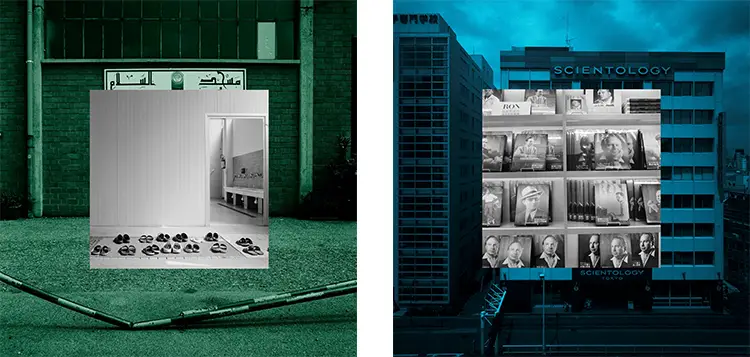
Rituals of Reclamation and the Architecture of Belief
With a ribbon and a prayer, Camellini embarks on perhaps his most ambitious project to date. This ongoing body of work captures the global phenomenon of secular buildings being redefined as sacred spaces, across diverse cultures, religions, and geographies. What sets this series apart is its methodological scope and symbolic intensity. By framing his research across multiple continents and spiritual traditions, Camellini emphasizes the universality of the human desire to sacralize, to reclaim space not merely for utility but for contemplation and transcendence. His lens lingers on places that once served commercial, administrative, or residential functions but have since been transformed through acts of spiritual reinvention — through gestures as humble as tying a ribbon or offering a prayer.
Technically and aesthetically, the project marks a departure from his earlier monochromatic work. A ribbon and a prayer is presented through paired color images: one exterior shot representing the past identity of the building, and a second interior view revealing its sacred reconfiguration. Each pair is linked through a dominant guide color associated with a particular religion or spiritual practice, subtly indicating the faith context without relying on textual explanations. Camellini employs a dual-framing technique, wherein the interior photograph is either physically mounted within the exterior frame or displayed altar-like in front of it. This creates a layered visual structure that mirrors the conceptual transformation of the space. The installation choices — including pedestal-mounted interior prints that invite a reverent gaze — further blur the boundary between documentation and devotion.
The project’s power lies not just in its formal innovation but in its philosophical implications. Camellini’s photographs illuminate how communities repurpose spaces in response to displacement, migration, or spiritual necessity, revealing that the need for sacred connection transcends geography and circumstance. By emphasizing the quiet interventions — a ribbon tied, a prayer whispered — that imbue ordinary spaces with sacred meaning, he invites viewers to reconsider the thresholds between the secular and the sacred. This approach positions photography not as a passive witness but as an active participant in articulating the evolving relationship between people and the spaces they inhabit. Through this project, Camellini affirms that architecture is never fixed, and that the most profound transformations often occur without ceremony, through intimate gestures of faith and memory.
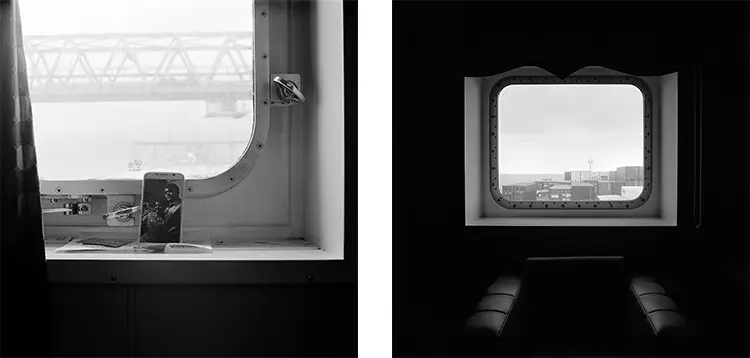
Massimiliano Camellini: Collaboration as Method, Innovation as Motive
For Camellini, the creative process is as collaborative as it is contemplative. His day-to-day practice involves constant dialogue with curators, post-production experts, lighting technicians, and installation specialists. These exchanges do more than refine individual images; they serve as fertile ground for the emergence of new ideas. Through collective interpretation and technical experimentation, each project evolves into a multi-sensory installation rather than a simple photographic display. This iterative, dialogic method reinforces his belief that art is not created in isolation but through the shared intelligence of a team that understands how to transform conceptual depth into experiential form. Such a process aligns with his vision of photography as an art of spatial transformation — one that must be felt as well as seen.
This openness to interdisciplinary collaboration has led him to embrace techniques from other visual arts, including sculpture, video, and performance. He draws inspiration from how these disciplines manipulate space, light, and viewer perspective, incorporating these elements into his own installations. For instance, large-format prints and unconventional framing methods are often employed not only to enhance the visual impact but also to shape how the viewer physically engages with the work. Strategic lighting and display height are considered as integral to the artwork as the photograph itself. These decisions, inspired by practices beyond photography, have enabled Camellini to build immersive environments where the photographic image functions less as a window and more as a threshold into another interpretive dimension.
Looking forward, Camellini remains deeply committed to pursuing research-based visual inquiries that intersect with urgent social, cultural, and philosophical questions. His interest continues to gravitate toward how physical environments — whether urban ruins, industrial voids, or domestic improvisations — carry latent narratives that photography can bring to the surface. While a ribbon and a prayer continues to expand across new geographies, he remains attentive to emerging phenomena that challenge conventional understandings of space, identity, and memory. Through his meticulous planning, collaborative production, and conceptual rigor, Camellini exemplifies a form of photographic practice that does not merely record the world but actively interprets its shifting meanings.
